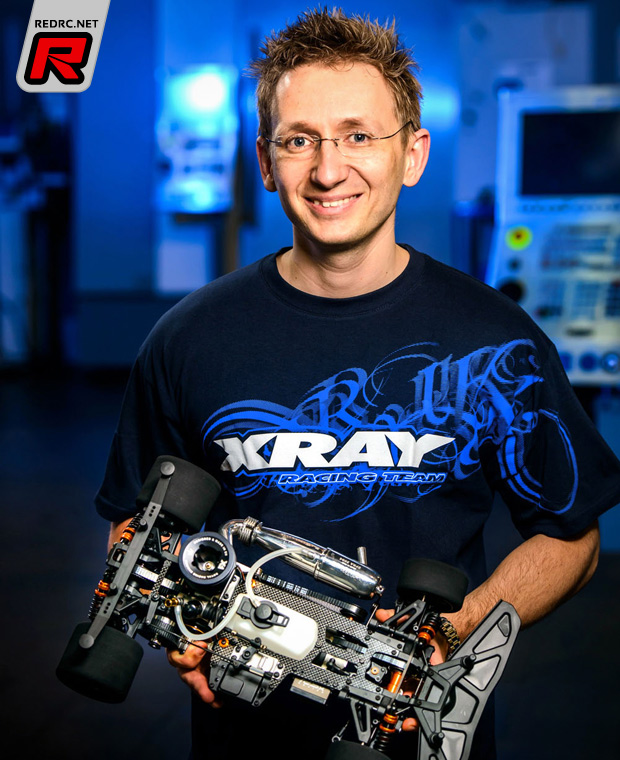Exclusive – Making the RX8
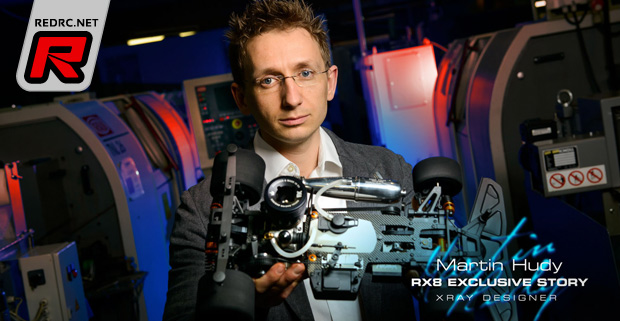
Following our exclusive interview with Xray’s onroad designer Martin Hudy about the forthcoming Xray RX8 1/8th nitro on-road car we now have a more in-depth article in which Martin explains the challenges of making an already proven car even better and how he tackled the recent tyre rule changes.
The 1/8 on-road class is considered the F1 of RC cars which surely it is. It is a very niche category, highly competitive and with all manufacturers extremely dedicated to achieve maximum performance. The RX8 is our flagship project as it is a class that both myself and Juraj started with and grew up with, and we continue to work with the team on further development of this platform year after year. Last year we made several improvements to the handling and reliability of the car, but now with new rules this year it was time for a major update.
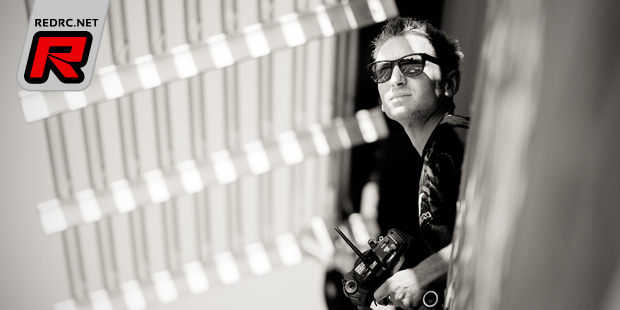
In the last few years we have reinforced and built a stronger 1/8 on-road team which now includes racing superstars such as Ralph Burch, Paul Lemieux, Mike Swauger, Carmine Raiola, Rick Vrielijnck, Massimo Fantini, Jernej Vuga, John Ermen, and Tobias Hepp. All professional and dedicated 1/8 on-road drivers – many of them European, USA, or World Champions – were very active the entire year on testing new parts and ideas, and also provided valuable input that helped me to have a very clear idea of what we needed to change and improve this year.
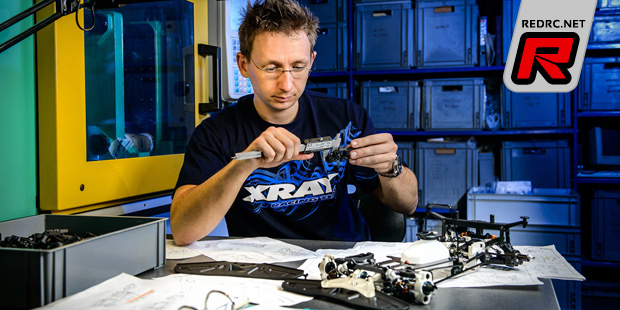
Because I am responsible for the entire Xray on-road division and take care of all platforms – including RX8, NT1, T4, X12 and X10 – my R&D and racing time have to be divided equally which is very time consuming and keeps me very busy. At the same time it helps me a lot in development as I can transfer new experiences and ideas from one platform to another. Of course the team plays a very important role in the development as the various drivers in different classes help me a lot, especially with long-term testing of parts and most importantly the drivers are usually focused on only the few classes which they race the whole year (and as such I collect feedback during the whole year which helps me to push the development further and much more effectively).
For the RX8 I had very good recent experiences about how it works in high-traction, warm tracks (such as Italy) as well as on low-traction, cold tracks (such as Germany and Netherlands). Armed with a clear list of improvements, I had to focus primarily on the hardcore work behind the computer.
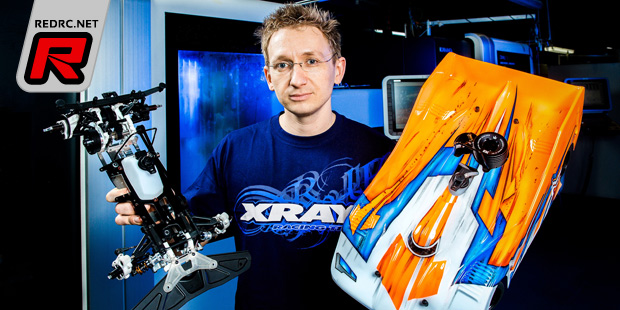
New tire rules in the 1/8 on-road class meant that I had to change the direction of development of chassis and suspension geometry which I made the year before. Two years ago, all drivers were using additives and super-soft tires which generated a lot of traction and steering. That is why I came up with the low-profile shocks which made the car more flat and stable, and easier to drive under high-traction conditions.
However last year the tire rules changed completely as we had spec large-size tires which changed driving characteristics a lot as the spec tires were not only large but also very hard. That is why I had to concentrate on improving the steering characteristics of the car, while at the same time making sure that the car would be still easy to drive and with enough traction. With the larger tires now being used, bottom-end power was less compared to before so I had to improve on that as well.
Main focuses:
Steering characteristics
Cornering speed
Traction
Bottom-end power
Fuel tank
Improve the ease of working on the car
Steering Characteristics:
At the EC in UK last year where I used the spec tires, I felt that the car did not have enough steering in low-speed corners, and not enough steering response when I wanted to change direction. Therefore I knew that this would be one of the main goals to improve on the new car. I was thinking about what could be improved to gain more steering, and after examining my experiences from electric and also nitro cars, I knew that improved steering could be obtained by working on the shocks, anti-roll bars, and servo saver.

Shocks – In 2013 I followed through on my idea of using short shocks from electric cars. That worked back then, but unfortunately, I did not know that the rules would change so drastically. With the large-size, harder spec tires, the short shocks were not as well suited as they were with smaller tires and additives and therefore I decided to return to longer shocks. But simply going back to “old style” shocks was not really an option; I wanted to make improvements for our customers.
When I mounted the old-style longer shocks on the car, I realized that the movement of the shocks was not as good as I would have hoped for. Therefore I decided to modify and optimize the shock’s up- and down-travel. To achieve this, I needed to redesign the shock body and lengthen the shock shaft. I also wanted to improve the smoothness and therefore we changed the material of the shock pistons to Delrin which is widely known to be one of the smoothest materials available. I also considered increasing the diameter of the shock body, but ultimately did not want to create another full range of new springs. Therefore I decided to keep the shock diameter the same so that existing 2012 springs could be used again.
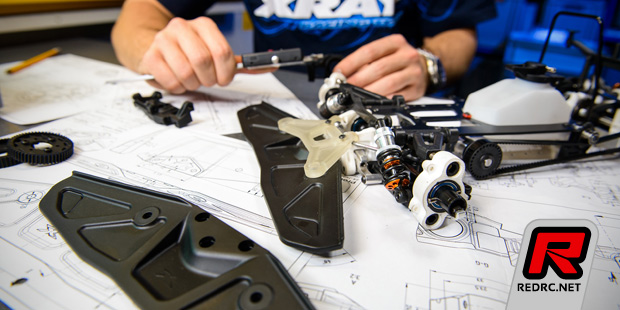
Anti-roll bars – To achieve better steering response and to improve low-speed steering on the NT1, the front wire anti-roll bar was a significant improvement – so therefore I decided to offer a wire anti-roll bar at the front of the RX8 as well. However, I knew from my own NT1 experience that the wire anti-roll bar is not always the best in a particular situation – for example, on very large tracks with high-speed corners, the blade anti-roll bars works better as the car does not slow down in corners that much. For this reason I decided to include both wire and blade anti-roll bars so the customer can choose the bar according to the track.
When I was creating the wire anti-roll bar in the CAD system, I was thinking about offering our customers something new; I wanted to come up with something innovative and different, and therefore I decided to make a bearing-mounted adjustable anti-roll bar for extra-smooth movement. I had to completely redesign the front bulkheads as well as the upper bumper and the lower front arms to achieve this, but everything worked out extremely well.
The wire is mounted in two bearings in the bulkheads, and is secured by aluminum bushings which have grooves so the bushings can be easily removed from the wire. The anti-roll bar can be very simply adjusted with a screwdriver from the top. Because I like the design & position of the front anti-roll bar as well as its easy adjustment possibilities, I decided to make the rear bar the same style. So I changed the position of the bar which allowed me to place the bar much lower and give the wire only a single bend (instead of two angles as on the previous version).
Servo saver – One of the main components which changes the steering characteristics is the servo saver. The RX8 has an adjustable servo saver which has easily-changeable Ackermann characteristics, but I was thinking about also trying to change the position of the servo saver to understand how the steering characteristics would change. So I made a chassis with extra holes in front of and also behind the original hole. After testing I realized that the car gains more in-corner steering as well as steering response when I moved the whole servo saver more forward. After various attempts of repositioning the servo saver, it became clear that the forward position improved steering in low-speed corners, while the rearward position gave more stability in high-speed corners. Therefore I decided to have two positions in the car and the customer is able to choose the position according to the track.
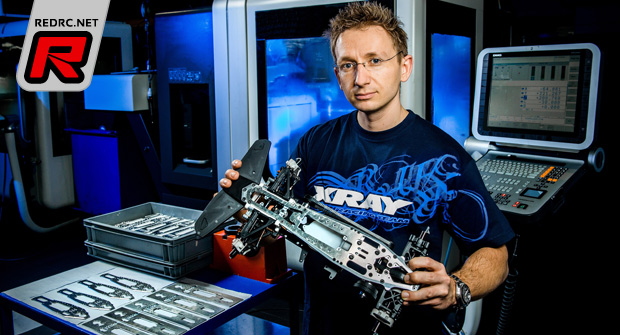
Cornering Speed:
Aero-disks – Besides the improvement of in-corner steering, I was thinking about how cornering speed could be improved. Some drivers told me that their cars sometimes push too much coming out of corners and in high-speed corners, mainly due to the large, hard spec tires. The redesigned front and rear anti-roll bars helped a lot with this matter, but I still felt that there was room for improvement.
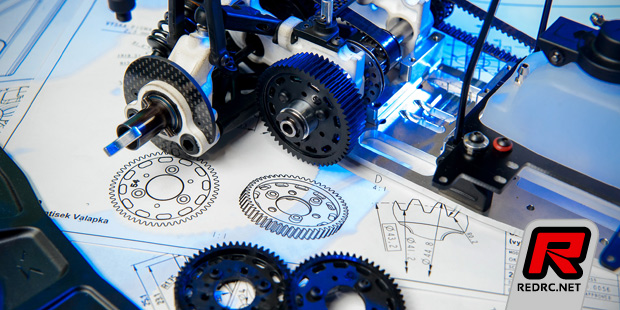
An idea from 1/10 nitro came to mind: we put large stickers on the wheels in order to cover the holes in the wheels. It may seem like a very simple or even silly thing to do, but it really makes a difference! Nitro cars achieve very high speeds compared to the size of the car, and therefore the effects of air dynamics really influence car handling a lot. I decided to test this theory by covering the wheel holes by gluing Lexan disks into the wheels. When I tested this the first time, I immediately felt that the car had better out-of-corner steering as well as cornering speed.

After the first test, I was sure that I needed to implement some kind of “air protection dam” on the steering blocks and rear uprights. I decided on the simplest but also best looking solution: air protectors made from graphite which would be attached to the front steering blocks and rear uprights – this of course would require modification to those plastic parts as well. The tests of the graphite aero-disks were even more positive than the Lexan disks on the wheels; the aero-disks improved steering and cornering speed in front, and cornering speed and traction in rear.
Shock position – Cornering speed is also affected by shock position, so therefore I went to work on different shock positions at both front and rear. After many tests on different tracks and in different track conditions, I came up with new positions for the rear shocks. Both the shock tower and bottom arm holder were modified to gain maximum cornering speed and rear traction.
Even though I also tested several different shock towers and arm holders in front, ultimately I determined that the original positions were ideal.
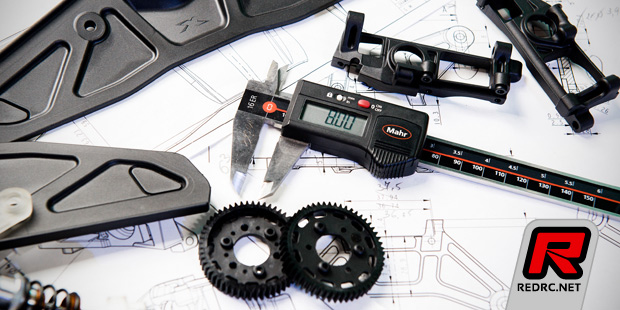
Hard plastic bulkheads: Hard plastic bulkheads which were optionally available in the previous version are now included in the kit. They improve cornering speed mainly under high-temperature conditions.
Traction:
Due to the spec tire rules, drivers cannot choose the tire hardness according to traction but must use what the organization mandates. For this reason, I wanted to improve the car’s overall traction as well. I achieved better overall traction using the new shock positions, aero-disks, anti-roll bar placement, as well as shocks.
Bottom-End Power:
Because of the larger spec tires, bottom-end power was negatively impacted. Together with our Italian team we tested the idea of incorporating the smaller 2-speed transmission from the NT1 into the RX8. In order to use the NT1 2-speed transmission and gears in the RX8, I had to redesign the adapter for the 2-speed, carrier for the 2-speed, and change the size of the pin for the adapter and flanged bearings for the carrier.
Since I also needed to change the clutch to be able to use the NT1 pinions, I had to change the clutchbell, thrustbearing collar, and the sizes of the bearings. The change also required a new chassis as it required moving the engine more to the rear so everything would fit properly. I knew that all these changes would require a lot of testing because first of all I wanted to be sure that the NT1 gears would be durable in the RX8 and also that top speed would remain unaffected.
After the first test, I was really impressed about the improvements in power… the car had much better bottom-end power. Even though I liked the smaller 2-speed transmission a lot, I also wanted to keep the possibility of using the original larger 2-speed transmission. Therefore I designed the chassis in such a way that the engine could be moved forward or rearward depending on the size of the 2-speed transmission. I made the design of the smaller 2-speed transmission in such a way that the customer could change to the larger 2-speed transmission with a minimum of additional option parts.
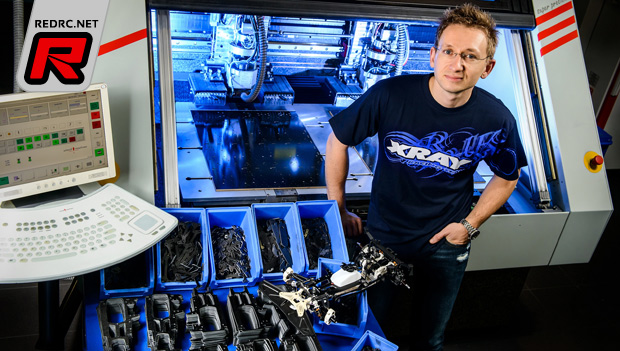
Fuel Tank:
The fuel tank was modified a year ago by adding internal baffles to ensure that fuel would always be in the area around the fuel pickup, so that even in fast, long corners the fuel would be constantly supplied to the engine. However, during the EC in UK I encountered a problem in a corner which was on a small hill. I realized that it was not the fuel tank that was the cause of the problem, but rather it was the mounting system of the fuel tank. I realized that it is very important to have the fuel tank mounted freely in the radio plate so the tank can move in all directions. Therefore I removed some material from the radio plate around the fuel tank for better movement and added an extra O-ring between the tank and the grommet.
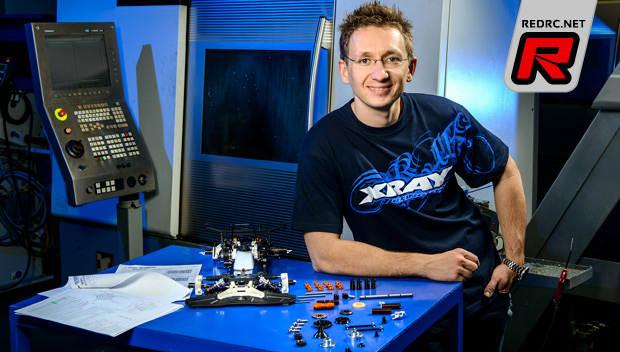
Improving the ease of working on the car:
One of Xray’s biggest advantages – besides performance & quality – is that all cars are very “user friendly.” I always make notes during the year when I am wrenching on the cars, so we can see what could be improved from an “ease of use” point of view. While some may consider this a small consideration, we feel it is an important part of designing a car.
Suspension pins with grooves – This year I added grooves on the suspension pins to help ensure the pins would not come out during operation. I also changed the anti-roll bar mounting system so now they are much easier to adjust and work on.
Front middle shaft mounting system – It has happened to me a few times already that after the semi-finals the front belt was broken and needed to be changed before the main final… a change that needed to happen very quickly. Access to the front belt was not as easy as I would have liked, and therefore I redesigned the front middle shaft mount so the front belt can be changed much more easily. Also, I added an extra hole for inserting the exhaust mounting wire, so the mounting position is not that far from the exhaust and there is less risk of bending the exhaust in a crash.
Anti-roll bar mounting system – Thanks to the new design of the anti-roll bars and the mounting positions, work on the bars is now much easier. The length of the anti-roll bar linkages is easily adjustable from the top using a 1.5mm Allen wrench.

At the end I would like to thanks everyone for the trust in our products. I am very happy to present to you the all-new 2014 RX8, the best finely-crafted, high-performance 1/8 on-road nitro racing car. The attention to detail is superb, and the time spent by the factory and R&D teams in this project have been well captured in this new flagship car that will bring you to the winners circle. Enjoy it, and have fun!
